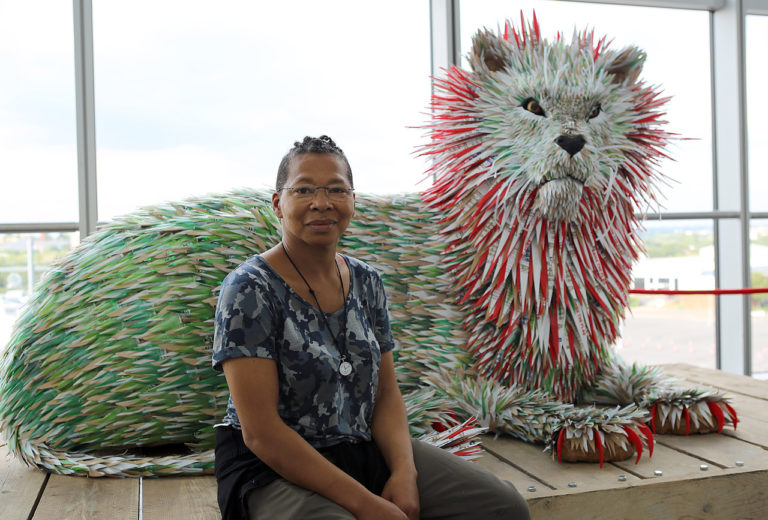For over 25 years, Faith Bebbington has been building an impressive career as a professional sculptor. Working with clients such as ITV, Veolia, the FA (Football Association) for Wembley Stadium and Westminster City Council, her large-scale sculptures made from recycled materials have been exhibited in a myriad of locations across the UK. From skateparks and shopping centres to international train stations and football stadiums, her ‘3D graffiti’ engages with communities and explores non-traditional materials.
ArtWeb caught up with Faith to discuss the importance of sustainability, working in the public realm and to find out which key ingredients make for a successful career as an artist.
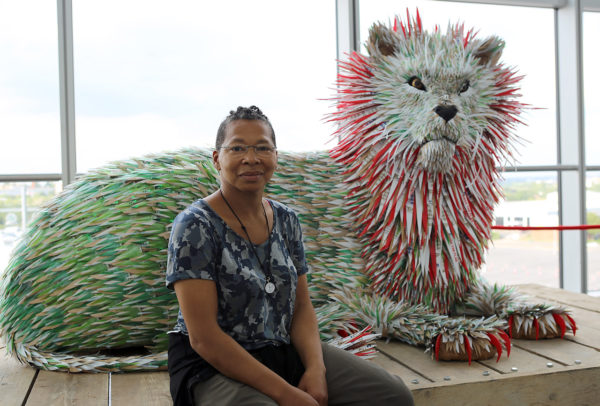
For readers who may not be familiar with your work, could you provide a bit of background info about yourself and your motivations for becoming an artist?
I’m a sculptor, which I’ve wanted to be since I was 6. Ever since I first got my hands on a bit of clay — that was it, I was a convert! I have mild cerebral palsy and they said I wouldn’t walk, but art was a saving grace for me.
Is the relief you found in art is something that drives your work with schools and communities?
Yes, definitely. A lot of people said ‘there’s no career in art’, but that’s what I could do well. My adoptive mum was a teacher, so she pushed me to do teacher training after my sculpture degree, and even though I’ve never been a full-time teacher, it gave me the confidence to make the transition into the community and schools. If she hadn’t done that I wouldn’t have been as successful as I am.
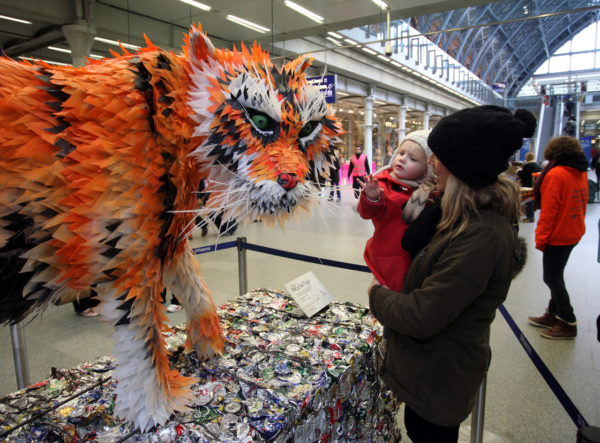
Your earlier sculptures tend to focus on the human figure, whilst your more recent works have moved toward the animal. What was the catalyst for this shift?
To be honest, the catalyst for me was cancer. I survived terminal lung cancer, which changed everything. I was working in fibreglass resin, which I think gave me cancer. So, I no longer work in fibreglass but with recycled materials.
When I was little, I used to make clay sculptures of dogs and my mum would say ‘You’ll have a career if you just make animals’ because I had a natural affinity to them. The common thread for all my artwork is a preoccupation with capturing movement.
I’m actually going back to figurative work, but with recycled materials, it’s difficult to get the smooth texture that fibreglass allowed me so I’m experimenting with melting recycled plastics.
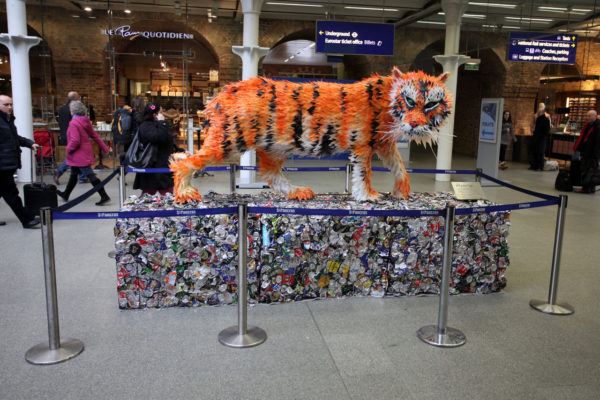
Yes, your work features a variety of recycled materials such as milk bottles, cardboard, beer bottles and even old plastic from terrace seating. Is sustainability important to you?
Absolutely. My generation is the era of plastic. When I was 14, my mum bought me a book called Sculptures in Plastic [by Nicholas Roukes], which is one of the reasons I got into fibreglass. At that time, it was a new material and everyone was excited about it. Whereas now, we’ve made this plastic mountain of mess and I feel like I am responsible to help sort that out in my own small way.
I’ve been experimenting with melting plastics together, to get rid of joining materials. Things like fishing wire, glue and cable ties aren’t good for the environment, so I’m trying to eliminate them from my practice, that’s my new challenge.
I’ve been collaborating with local CIC plastic tactics and just made a new contact with a manufacturer to use their waste products. It’s a slow build-up, but it’s something that I’m consciously doing and I’m going to stick with it.
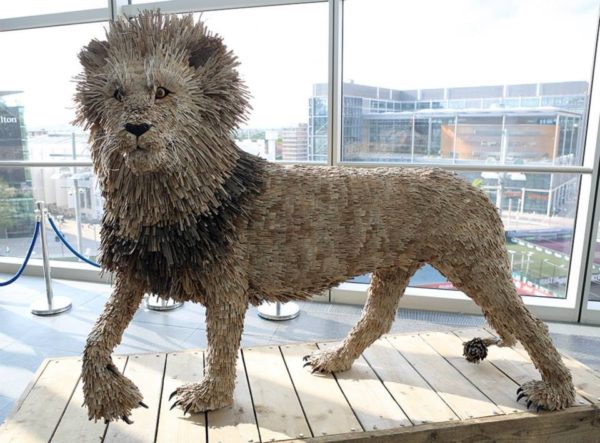
Since 2002, you have undertaken many public-realm projects. What’s it like making site-specific work? Are these opportunities generally commissioned or self-initiated?
The first piece I did was a baby elephant, which another artist, Steve Broadbent, recommended me for. He introduced me to Veolia, the environmental waste management company who commissioned it. Then they asked me to make a tiger, which was displayed in St Pancras International Station, London. Next, I got commissioned by the Football Association to make two life-size lions for Wembley Stadium while I was still having treatment for cancer, and I couldn’t let that opportunity go.
When I got better, I had a lot of time and no work, so I took advantage of that and made Super Rat, the only public piece I’ve ever made which hasn’t been commissioned. I love the concept of what I call ‘3D graffiti’, just placing a piece outside so that people can see it. I want to get my work out there on the street so that everyone can enjoy it. You don’t need an essay to explain what you’ve done, it’s there and people can take it at whatever level they want.
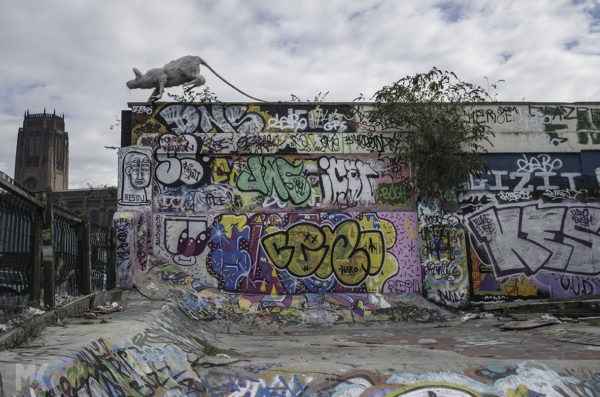
I particularly loved Super Rat! A graffitied skate park on the edge of town seems like the perfect place for urban creatures like rats.
Yes, I’m trying to get it back up there, but, because it backs onto a bar, it’s been difficult, and finding alternative locations is proving slow. I have some baby rats that I want to get out there too; it’s just about getting hold of people and asking them if it’s ok to do it.
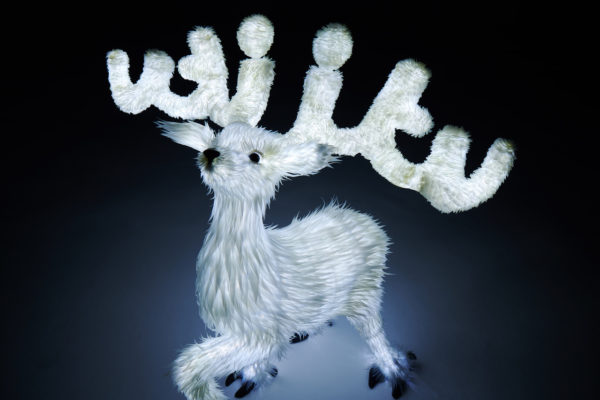
You’ve been a professional artist since 1993 — what advice would you give to artists on cultivating a sustainable career?
Keep at it! Make links with local businesses who have a lot of waste, because they always do, and of course, it’s much cheaper than going out and buying a ton of new materials. Try and collaborate with people, ‘cause things don’t happen on your own, I’m learning that quite slowly. Being part of a community of artists is really important, being able to feed off each other.
Financially, teaching is a great way of supplementing your work, but it also strengthens it. I try ideas out with the kids and if it goes well I try them myself.
The other thing is not to put all your eggs in one basket, you have to watch you’re not too reliant on one client or company — try and diversify!
Learn more about Faith Bebbington, her artwork and upcoming projects on her website and Instagram page.

